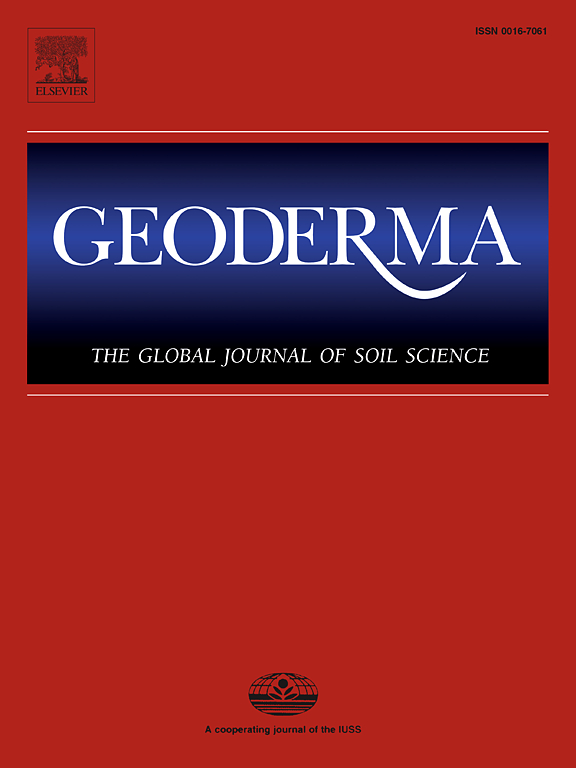近30年来中国黄土高原深层土壤干燥的扩展与加剧
IF 6.6
1区 农林科学
Q1 SOIL SCIENCE
引用次数: 0
摘要
在当前土地利用变化的背景下,土壤水分正经历着不断的变化。“退耕还林”工程的实施扩大了黄土高原的植被覆盖面积,消耗了土壤水资源,甚至是深层土壤。然而,由于观测条件的限制,深层土壤干燥在大尺度上缺乏时空变化特征,植被恢复对其发展的影响也尚未得到解决。在此,我们基于已发表的1-10 m土壤剖面的土壤水分数据集,利用干燥土层(DSL)指数来评估深层土壤干燥程度。以GFG项目启动时间(1999年)为拐点,将研究期分为第一阶段(1985-1999年)和第二阶段(2000-2015年),利用空间随机森林方法获得了各年份DSLs的时空分布。DSL区域主要由第1时期的干旱半干旱区向第2时期的半湿润区扩展。DSL- swc内土壤平均含水量由第1期的8.6%显著下降至第2期的7.4%。黄土高原第1 ~第2期土壤深层干旱化程度的扩大和强化表明,在区域尺度上,GFG工程后由于植被恢复,土壤深层干旱化程度有所增加。为了更好地支持植被绿化,我们提出了大规模植被配置和小规模管理强化相结合的生态系统可持续发展管理模式。本文章由计算机程序翻译,如有差异,请以英文原文为准。
Expansion and intensification of deep soil drying on the Loess Plateau of China over the last three decades
Soil water is experiencing continuously changing under current land use change. The launch of the great “Grain for Green” (GFG) project expanded the revegetation area on the Loess Plateau of China, with the consumption of soil water resources, even in the deep soil. However, spatial and temporal changes of deep soil drying are lacking at a large scale due to observational constraints, and their development caused by revegetation has not been addressed. Here, we utilized dried soil layer (DSL) indices to evaluate the degree of deep soil drying based on a published soil water dataset for the 1–10 m soil profiles. We divided the study period into Period-1 (1985–1999) and Period-2 (2000–2015) with the start of the GFG project (1999) as the turning point, and obtained the annual spatio-temporal distribution of DSLs by using the spatial random forest method. DSL areas mainly extended from the arid and semi-arid regions in Period-1 to the semi-humid region in Period-2. The mean soil water content within the DSL (DSL-SWC) significantly decreased from 8.6% in Period-1 to 7.4% in Period-2. Enlarged and intensified DSLs across the Loess Plateau from Period-1 to Period-2 indicated that the degree of deep soil drying increased after the GFG project at the regional scale due to revegetation. To better support the greenness of revegetation, we proposed management practices incorporating large-scale revegetation allocation and small-scale management reinforcement for sustainable ecosystem development.
求助全文
通过发布文献求助,成功后即可免费获取论文全文。
去求助
来源期刊

Geoderma
农林科学-土壤科学
CiteScore
11.80
自引率
6.60%
发文量
597
审稿时长
58 days
期刊介绍:
Geoderma - the global journal of soil science - welcomes authors, readers and soil research from all parts of the world, encourages worldwide soil studies, and embraces all aspects of soil science and its associated pedagogy. The journal particularly welcomes interdisciplinary work focusing on dynamic soil processes and functions across space and time.
 求助内容:
求助内容: 应助结果提醒方式:
应助结果提醒方式:


